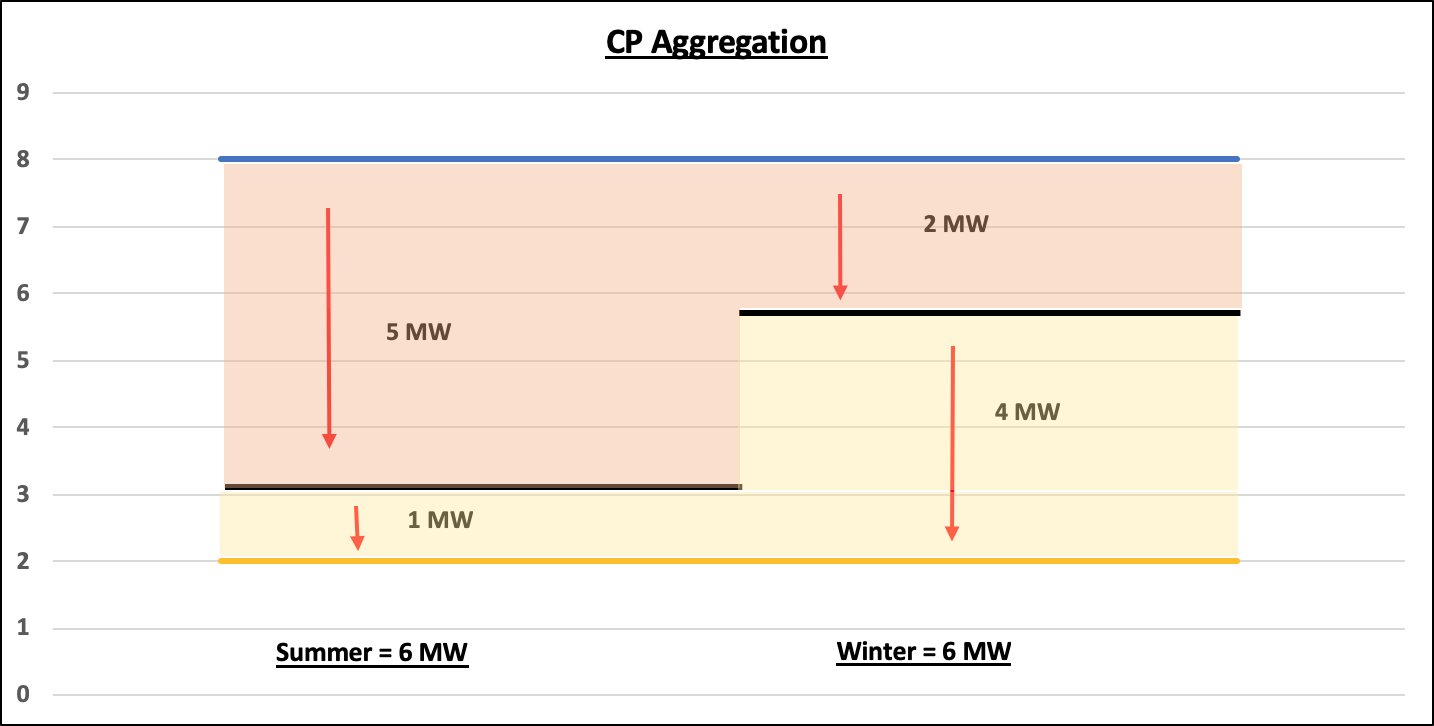PJM: A Look Ahead to Summer ’19 and Beyond

Summer 2019 is right around the corner, which means another season of PJM’s Emergency Capacity demand response (DR) program is set to kick off. This 2019/2020 marks an important pivot point for DR in PJM. With DR enrollment underway, let’s take a look at some things to expect this summer.
2019 Summer Outlook
Weather-wise, early indications point to the PJM region experiencing normal to mild summer temperatures. That’s good news for DR customers in Emergency Capacity but may be challenging for peak shavers to accurately predict PJM’s 5 CP (Coincident Peak) hours. The weak El Nino climate is not expected to have much of an impact, although there’s a good chance that the historically wet 2018 season will carry over to 2019. So don’t put away those rain slickers just yet!
Capacity-wise, PJM forecasts summer peak load of 151,358 MWs. Unlike in Texas, where the grid operator ERCOT (Electric Reliability Council of Texas) is forecasting a reserves situation that make summer emergency events likely, the PJM region at this point seems to have adequate reserves. As we learned during the 2014 Polar Vortex, though, nothing is completely certain when it comes to expected supply and demand. Here’s hoping the summer weather forecast proves to be right.
Goodbye Base and Summer Capacity, Hello Capacity Performance— and Seasonal Aggregations
June 2019 will mark the final season of PJM’s summer-only DR programs. PJM retired the Limited and Summer Extended DR programs after the 2017/18 delivery year, and now will retire the Base Capacity program at the conclusion of the 2019/20 delivery year.
This will usher in the long-talked-about Capacity Performance (CP) DR program as the lone DR program available, starting next year for the 2020/21 delivery year. As you probably know (and as we discussed in last year’s white paper on the myths around CP), the CP program required DR participation and compliance year-round, not just during the summer. As originally designed, CP DR customers would have to participate with one load reduction value for the entire year. To many, this has caused far more problems than it solved, as many DR customers feared having their participation levels drastically reduced — or even dropped from the program entirely — due to concerns over their inability to participate and comply in the winter.
Fortunately, PJM and the FERC (with a little help from CPower Market Development and others, advocating on our customers’ behalf) may have found a way to put those concerns to rest.
The FERC (Federal Energy Regulatory Commission) recently approved a PJM filing that will now allow DR customers to participate in CP with two different summer and winter seasonal load reduction values. Of course, there’s a catch. Participating with separate summer and winter values is contingent upon the customer’s curtailment service provider (CSP, i.e., CPower) being able to offset its seasonal load to create “CP Aggregations.”
How does that work? Let’s take two customers, Alpha Amalgamated Alloys and Beta Better Ball Bearings. Each has participated in summer-only DR for years. Now, however, they have to make year-round commitments, and they’re stuck.
Enter the new rule and their CSP, CPower. CPower works with each to determine what each can contribute for summer and, separately, for winter. Alpha determines that they can reduce 5 MW in the summer but only 2 MWs in the winter. Beta determines that they can reduce 1 MW in the summer but 4 MWs in the winter. And they’re both in the same utility zone within PJM.
Under the rule as originally created, Alpha would be faced with having to curtail only 2 MWs in the summer, when they used to be able to curtail—and monetize—5 MWs. Meanwhile, Beta would be unable to monetize their additional 3 MWs of now-required load in the winter. That could change the desire to participate in Emergency Capacity DR for these two long-time customers.
The new rule, however, allows their CSP to aggregate (or combine) their reductions to create a CP zonal aggregation of 6 MWs year-round. Their combined summer reductions and winter reductions balance each other out and comply with the new CP requirements. Each continues to benefit from DR participation in PJM.

This program rule change, thankfully, allows more flexibility and opportunity for PJM’s DR customers to participate as Emergency Capacity resources (which PJM always needs). This assumes, however, that their CSP has the market position and a diverse portfolio to successfully manage these DR CP programs.
Shameless plug: CPower, of course, has the capability to generate zonal CP aggregations across all PJM zones and all customer types. We’ve worked hard to not only build ourselves into the top curtailment aggregator in PJM; we’ve also advocated tirelessly before PJM to create this opportunity for our customers to ensure that CP doesn’t negatively impact PJM’s vital electric reserves. In this way, barriers become opportunities, and everyone wins.
What to Look Out For
PJM has pushed back their next Base Residual Auction (BRA) for the 2022/23 delivery year from May, 2019, to August, 2019 and the possibility still remains that it could get pushed back again until early Spring 2020. This will allow for some RPM rule changes to be implemented. If you’re interested in future capacity prices and DR availability, stay tuned, as the results for that auction won’t be known for a few more months.
PJM stakeholders are discussing potential changes to the mandatory DR test even that occurs each summer if there is no actual emergency event called. Some topics of discussion are: increasing the test event to longer than one hour; compensating test event compliance with emergency energy payments; PJM scheduling the test event instead of the CSPs; and possibly a mandatory winter testing provision. Nothing’s set in concrete yet, and CPower will keep you up-to-date as the discussions move forward.
Just Released: 2019 State of the Market
Finally, CPower has released, “2019 State of Demand-Side Energy Management in North America.” This is an invaluable resource filled with analysis and commentary from CPower’s market experts (including yours truly). It covers all regions served and supported by CPower in the U.S. and Canada and will be an important source of information for DR customers and partners regionally and nationally. Download your guide here.
If you have any questions about goings-on in PJM now and in the future. don’t hesitate to reach out to the PJM team. As always, we’re here to help.


